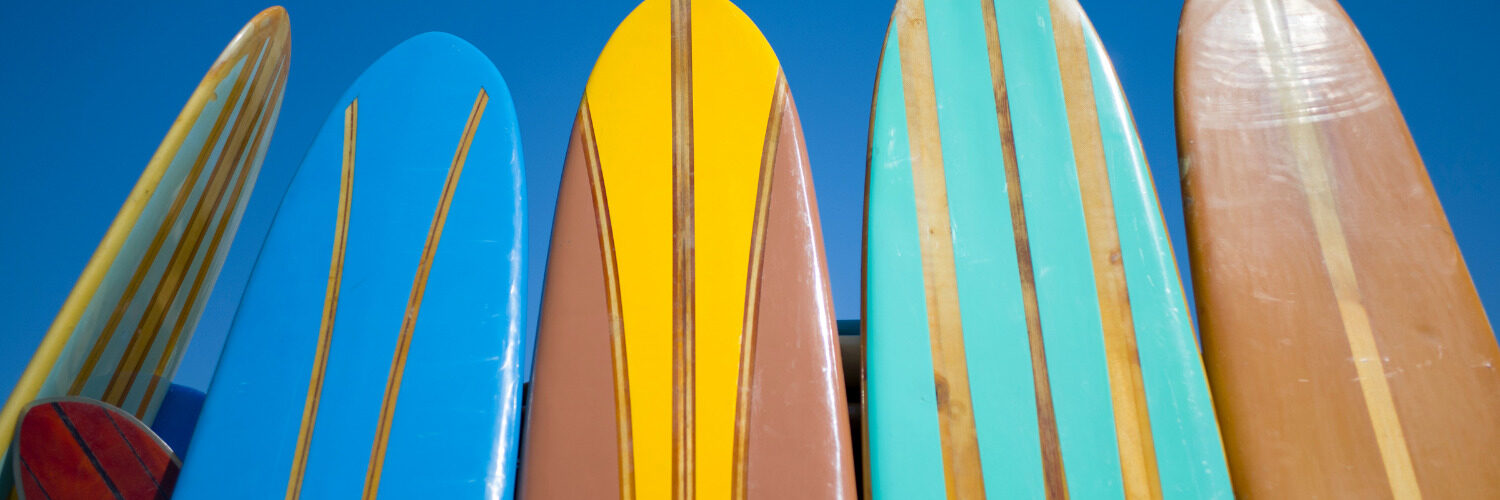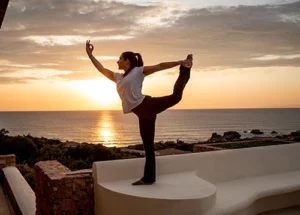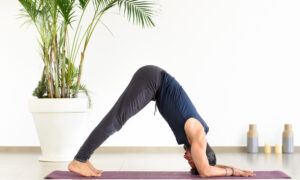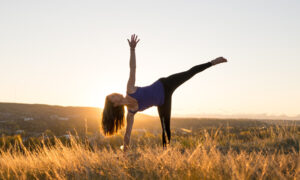

Yoga for Surfing – Perfect Synergy
Yoga and surfing are a way of life
Yoga is more than exercise and surfing, more than a sport. In fact, they are lifestyle choices. Yoga and surfing help you learn not only about yourself on a physical and spiritual level; they help you to understand your surroundings. Yoga seeks enlightenment of your spirituality whilst surfing makes you feel at one with nature. When you are practising them they make you feel that you are in a place of freedom, a place of peace and a place without time.
Many pro surfers have taken on yoga to support their surfing in terms of building strength, increasing flexibility, enhancing balance and concentration, peace of mind and breathwork to increase lung capacity. The likes of Taylor Knox and Kelly Slater, 9 times world titleholder, incorporate yoga into their training and feel the benefits.
Endurance and strength
Surfing is an exceptionally demanding sport on the body that, if you want to get any good and improve, you must work on building strength and physical endurance to last in the waves. Surfing is obviously the best way to build this endurance, but if you can’t get to the sea very often then yoga can help build endurance through a dedicated yoga practice. By practising for more than 1 ½ hours of yoga a couple of times a week, endurance levels will rise, as will strength. It is also good to tie the yoga in with swimming so that you are getting used to being in the water and developing an aptitude for it.
Endurance helps to keep you in the water for longer which in turn allows you more wave time to improve. Strength is necessary in surfing in all aspects but the first 2 stages in surfing require the most strength. They are paddling out and the pop-up. Paddling out requires intense use of the arms; forearms, biceps, triceps, rotator cuff muscles in the shoulder joint, serratus anterior and pectoral muscles. The back muscles are also used as the back is arched back in order to help project the arms forward in paddling.
The pop-up
This is when you have caught the wave and are ready to push yourself up into standing. First of all, straighten the arms. This is called the push-up. This pushes down the nose of the board and distributes weight equally along with the board, not just in the legs that would make it tough to go into standing. This makes it easy to pop-up which is when you go from lying to standing quickly.
Here you need arm strength as if you are doing a press up, so triceps, biceps, rhomboids, pecs and serratus, as well as the rotator cuff. Core strength is very important here because ideally, you want to be in a standing position as quickly as possible. In yoga, the sun salutation sequence is an excellent body warmer and strength builder, especially if you do the sequence as the Ashtanga Surya Namaskar 1. In Ashtanga, there are a lot of jump moves which increase strength and enhance balance and control. The jump through move, when going from downward dog into standing in the sun salutation is what you want to be able to do in surfing so practising on fine-tuning this will help with the pop-up.
Increasing flexibility
Although surfing is good exercise, it is not perfect because it is not completely symmetrical. Surfing does not work all body parts as it concentrates only on some especially the shoulders and arms. Therefore stretching and counterposes are essential in maintaining the equilibrium in the body.
Flexibility is just as important as strength. Flexibility will help to re-align and re-balance the body and various muscle groups, as some muscle groups are overworked and some are hardly used at all. By practising counter poses, such as the seated forward bend for the back, this helps with the overworked back muscles that are practically in locust position whilst paddling out. By doing this, you are ensured that you have a complete activity for your entire body.
Balance and concentration
Once you are up on the board, you want to stay there. You also want to be prepared if the power of the wave speeds up the board. When watching a good surfer, they make it seem effortless. They are completely relaxed, the body is loose, the hands are slack, nothing is tense. How do they do this? It is all in the lower joints of the body. Try doing tree pose with locked knees and toes. When the body sways it is much easier to fall. If you keep them relaxed, like a real tree, the body will bend into the sway and you will feel strongly rooted and balanced yet relaxed and calm. Stay loose in difficult times and you will stay on your board for longer.
In surfing, you are facing side on. The streamer is the centre line of the board and that’s where you want to be. You want to imagine that you are between 2 sheets of glass. Half-moon pose is helpful here, you can even practise it on your board, balancing on 1 leg with your body running along the streamer line. These 2 poses also enhance concentration.
Pranayama to increase Lung capacity
One thing that surfers, beginners or experienced are scared of is getting held underwater for too long. Pro surfers train by anchoring themselves underwater with heavy bricks and holding their breath for as long as possible, up to 2 minutes or more. This is if you are surfing big waves, but it is important to increase your lung capacity anyway, so if you were to be held under, you would be prepared and would be able to stay as calm as possible until you re-surfaced. Pranayama techniques enhance lung capacity and encourage calmness. Holding the breath is predominantly psychological and pranayama acknowledges this too, working with the mind to help increase lung capacity and overcome mental obstacles. Anuloma viloma is a great technique. Consult your yoga teacher.
Yoga for surfers: postures to improve your surfing
Dolphin pose
This pose is an excellent pose for opening and strengthening the shoulders, back and core stability. It is also good for stretching out the hamstrings, calves and arches of the feet which can aid balance on the board. Hold for 30 seconds to 1 minute.
1. Come onto the floor on your hands and knees. Set your knees directly below your hips and your forearms on the floor with your shoulders directly above your wrists. Firmly press your palms together and your forearms into the floor.
2. Curl your toes under, then exhale and lift your knees away from the floor. At first keep the knees slightly bent and the heels lifted away from the floor. Lengthen your tailbone away from the back of your pelvis and press it lightly toward the pubis. Against this resistance, lift the sitting bones toward the ceiling, and from your inner ankles draw the inner legs up into the groins.
3. Continue to press the forearms actively into the floor. Firm your shoulder blades against your back, then widen them away from the spine and draw them toward the tailbone. Hold your head between the upper arms; don’t let it hang or press heavily against the floor. Straighten your legs.
Ardha chandrasana: Half Moon Pose
This pose is excellent for improving balance, coordination and concentration, as well as strengthening many parts of the body including the ankles, calves, knees, buttocks, shoulders, chest, spine and core. If practised on your board you will also be able to line yourself up to the streamer to help with side-balance, which is key in surfing. Hold the pose for 30 seconds to 1 minute.
1. Perform extended triangle pose to the right side. Slide your left foot about 6 to 12 inches forward along the floor. At the same time, reach your right hand forward, beyond the little-toe side of the right foot at a 45-degree angle.
2. Exhale, press your right hand and right heel firmly into the floor. Straighten your right leg, simultaneously lifting the left leg parallel to the floor. Extend actively through the left heel to keep the raised leg strong. Don’t lock the standing knee: make sure the kneecap is aligned straight forward and isn’t turned inward.
3. Rotate your upper torso to the left, but keep the left hip moving slightly forward.
4. Bear the body’s weight mostly on the standing leg. Press the lower hand lightly to the floor to aid balance. Lift the inner ankle of the standing foot strongly upward, as if drawing energy from the floor into the standing groin. Press the sacrum and scapulas firmly against the back torso, and lengthen the coccyx toward the raised heel.
Yoga for Surfing – Parivrtta Janu Sirasana: Revolved head to knee pose
We spoke about strength, balance and concentration. This pose increases flexibility. It helps with flexibility in the hamstrings, groin and hip flexors, latissimus dorsi, and teres minor and major which help to open up the shoulders and armpits. It also extends the spine, opens up the rib cage and offers a good stretch to the deep lower back stabilising muscles. Hold for 1 minute then repeat on the other side.
1. Sit on the floor with your torso upright and your legs wide. Bend your left knee and snug the heel into your left groin. Straighten your right leg out to the side.
2. Inhale, lift the left arm above your head, lean the body to the right and allow the right thumb and forefingers to grab the big toe. Twist the rib cage so that your chest is opening up to the sky.
3. Press the left femur firmly to the floor to act as an anchor for the body. Gradually rotate and extend your left side so that eventually your right shoulder is soft against the inside of the knee.
4. Exhale and lower the left arm behind your left ear and take hold of the outside edge of the right foot. Press the elbows away from each other, using them like a crank to help twist the upper torso further. Turn your head to look at the ceiling.






